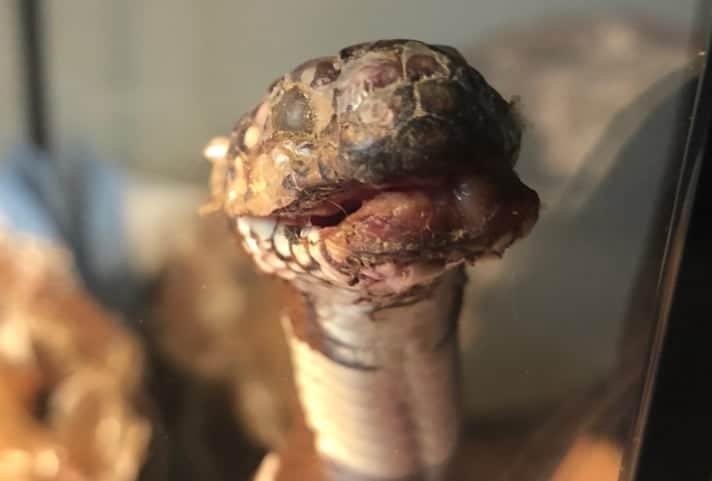Snake fungal disease, a debilitating disease that causes a slow death in wild snakes has spread tom more locations in California and has impacted more
Snake fungal disease, a debilitating disease that causes a slow death in wild snakes has spread tom more locations in California and has impacted more snake species, according to a three-year study conducted by the Department of Fish and Wildlife’s (CDFW) Snake Fungal Disease project.
“Early results of our study are in, and they paint a different picture than what we understood before. Prior to this project, we had only two instances of the pathogen in California,” CDFW Scientific Aid Raquel Elander said in a statement released to the media.
Snake Fungal Disease Study Launched
The state launched the study due to the discovery of the disease in 2019, when a California kingsnake was found stricken with the disease in Plymouth, Amador County, east of Sacramento. The snake was found by a member of the public on the side of the road in an emaciated state. It was brought to Tri-County Wildlife Care for possibly rehabilitation but was humanely euthanized due to its very poor physical state and the potential presence from SFD. A second snake infected with the disease in California was also found in 2019, an invasive Florida banded watersnake (Nerodia fasciata pictiventris).
Snake Fungal Disease Appeared In USA As Far Back As 1945, Study Says
First Case Of Snake Fungal Disease Confirmed In California
The pathogen that causes the disease, Ophidiomyces ophidiicola, has been confirmed in seven more snake species, from the families Viperidae and Colubridae. It has has been found on the Northern Pacific rattlesnake (Crotalus oreganus oreganus), Western yellow-bellied racer (Coluber constrictor mormon), Pacific gophersnake (Pituophis catenifer catenifer), Valley gartersnake (Thamnophis sirtalis fitchi), giant gartersnake (T. gigas), San Francisco gartersnake (T. sirtalis tetrataenia) and a non-native Eastern milksnake (L. triangulum).
To reduce the risk of transmission:
- Do not handle wild snakes.
- Individuals possessing a fishing license for the capture of snakes are encouraged to disinfect their hands using an alcohol-based hand sanitizer or wear disposal nitrile gloves which should be changed between animals.
- Footwear and any object that contacts the snake or its environment should also be disinfected between snakes or sites using a 10 percent bleach solution with a minimum exposure time of five minutes to effectively kill the fungus.
What is Snake Fungal Disease?
Snake fungal disease is devastating to snakes because it attacks the mouth and face area of the snakes, which prevents them from eating and drinking water. Its symptoms include scabs, lesions and crusty scales. According to researchers, the outermost layer of the skin separates from the underlying skin and the eyes become cloudy even though the snake is not in shed. The face of the snake also becomes swollen. Some species don’t show any outward signs of the fungus, but when they are necropsied, the fungus is found in the lungs.
Ophidiomyces ophidiicola is transmitted via snake-to-snake contact and from a contaminated environment. There isn’t evidence that the disease can be transmitted to humans, but humans can transmit the disease to snakes via handling contaminated snakes.
The disease has been recorded in more than 37 snake species in the United States and Europe. It has been found in 23 states, including California, marking the furthest west the disease has been found. It is not known if the disease will have negative effects on California’s native snakes. It has also been detected in captive snakes.



